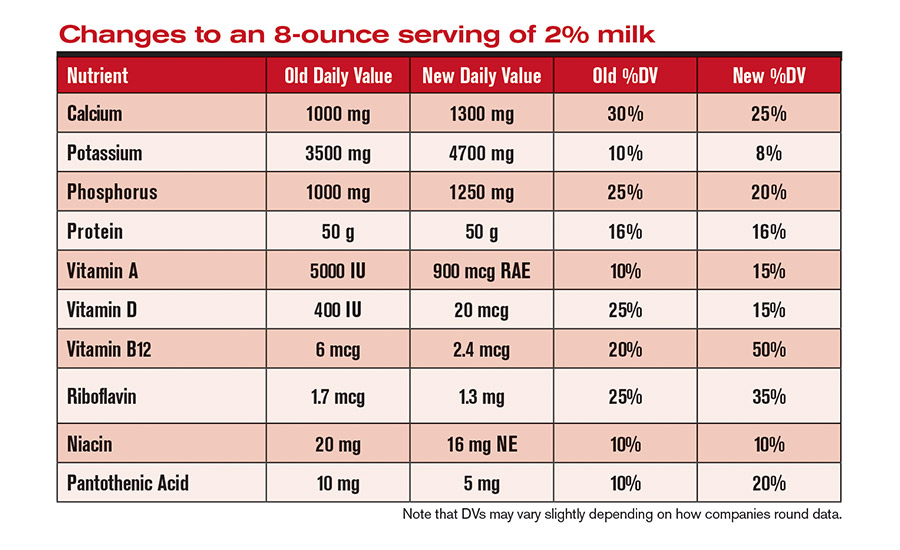New label rule impacts vitamin, mineral claims
New nutrient Daily Values will impact milk’s perceived nutritional value. You may need to make changes to your dairy fortification policy.




The dairy industry has long touted that “milk contains nine essential nutrients.” And while the nutritional content of milk, cheese and yogurt hasn’t changed, the claims that the industry can make about dairy will be modified in some important ways by the new Nutrition Facts regulations.
Milk will no longer qualify as an excellent source of Vitamin D or a good source of potassium, and Vitamin A won’t even appear on the label unless manufacturers decide to include it voluntarily. The new labels are already showing up on food products, and there are strategies for smart labeling and consumer education that will help dairy maintain its profile as a nutrient powerhouse.
Ins and outs of potassium, Vitamin D
Dairy processors will still be able to say that milk contains nine essential nutrients, but the list will change. Pantothenic acid is in and potassium is out. Many nutrients, including Vitamins A & D, have new measurement units. The National Dairy Council has created some helpful infographics about how the new changes will affect milk, cheese and dairy. The accompanying table reflects changes that will apply to an 8-ounce serving of 2% reduced fat milk.
Let’s explore two specific nutrients.
Potassium will be added to the list of mandatory nutrients. “As the Daily Value has changed, the industry will no longer be able to claim that milk is a ‘Good Source of Potassium,’ and very few foods will qualify as good sources of potassium. This is an area for the dairy industry to watch, along with the FDA’s new guidance on the use of ‘Healthy’ on food labels,” said Beth Briczinski, vice president, dairy foods & nutrition at the National Milk Producers Federation.
Vitamin D values will drop. In July the Food and Drug Administration amended the vitamin D fortification policy to allow dairy milk, nondairy milk alternatives and yogurt alternatives to add extra Vitamin D. New allowed levels of Vitamin D3 are twice the old levels, but there’s a conflict because no changes have been made to the standard of identity for milk. In an online memo, IDFA is suggesting, “In order to fortify with the higher levels, milk must be named with a nutrient content claim, such as ‘high vitamin D milk.’”
Label changes will affect not only milk, but also milk-based beverages and dairy alternatives, many of which use a nutrient premix.
“From a business standpoint, the upcoming label changes combined with recent recommendations in the Dietary Guidelines for Americans drive a discussion with our customers around nutrient density. We are seeing more nutritionally enhanced variants driving growth while the overall category is declining.” said Hugh Welsh, president, DSM North America.
Although the new nutrition labels won’t be mandatory for major producers until 2018, savvy companies who take advantage of new regulations sooner rather than later may achieve a competitive advantage.
Looking for a reprint of this article?
From high-res PDFs to custom plaques, order your copy today!






